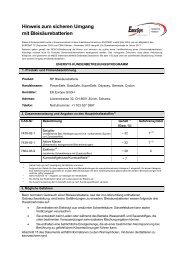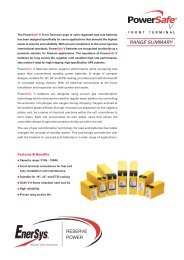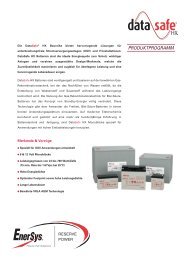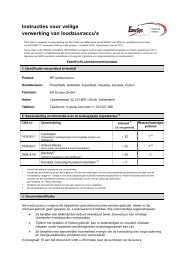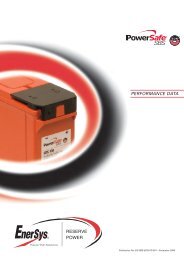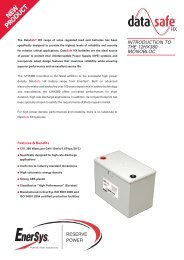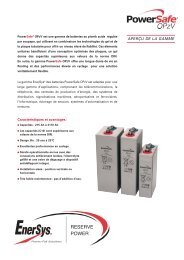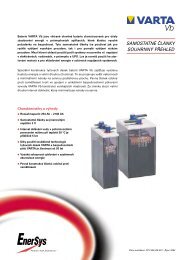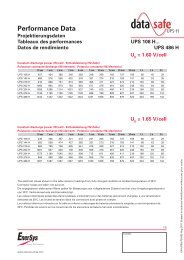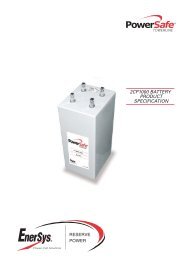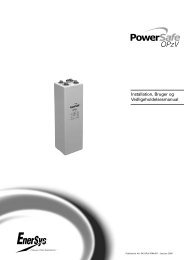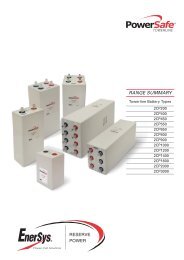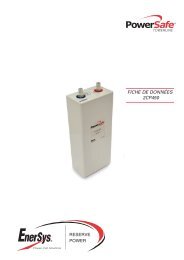En-Opzv-Pg-002 - Enersys - EMEA
En-Opzv-Pg-002 - Enersys - EMEA
En-Opzv-Pg-002 - Enersys - EMEA
You also want an ePaper? Increase the reach of your titles
YUMPU automatically turns print PDFs into web optimized ePapers that Google loves.
VII/ Commissioning charge<br />
When commissioning a new battery (first charge),<br />
follow procedure a) or b).<br />
Procedure a) is recommended.<br />
a) IU method (boost charge)<br />
At a raised voltage of 2.33 - 2.40 Vpc. The charging<br />
time will be 12 to 24 hours depending on the initial<br />
charge condition. The current must be limited to<br />
0.4C10.<br />
Boost charging must be switched off or switched<br />
over to float charging as soon as the fully charged<br />
state is reached.<br />
- Every month, check the total floating voltage at the<br />
battery terminals. It should be N x 2.25 volts at a<br />
temperature of 20°C (tolerance 2.23 - 2.25 Vpc),<br />
where N is the number of cells in the battery.<br />
- Once each year, effect a reading of the voltage of<br />
cells constituting the battery.<br />
- A difference of plus or minus 4.5% between these<br />
individual floating voltages and the average<br />
voltage may be observed. This is due to the gas<br />
recombination process.<br />
- A check on capacity (independent operation on<br />
load) can be performed once a year.<br />
Testing<br />
Capacity tests are to be carried out in accordance<br />
with IEC 60896-21&22. Check that the battery is fully<br />
charged. Before testing new batteries it must be<br />
ensured that a sufficient commissioning charge has<br />
been applied.<br />
b) Float charge:<br />
With a voltage of 2.25 Vpc. Full capacity will be<br />
obtained after a longer period of 4 to 6 weeks<br />
depending on state of charge.<br />
VIII/ Maintenance/checks<br />
www.enersys-emea.com<br />
Safety<br />
When carrying out any work on the battery, the<br />
applicable safety standards should be followed.<br />
Note : Keep a logbook battery in which the<br />
measured values can be noted as well as power<br />
cuts, discharge tests( current, time, T°…) etc.<br />
The main factors causing<br />
reduction in the life expectancy of<br />
PowerSafe ® OPzV battery cells<br />
- Deep discharges<br />
- Poor regulation of the float voltage<br />
- Poor quality (smoothing) of the charging current<br />
- High ambient temperatures<br />
Publication No: EN-OPzV-PG-<strong>002</strong> - January 2011<br />
25



